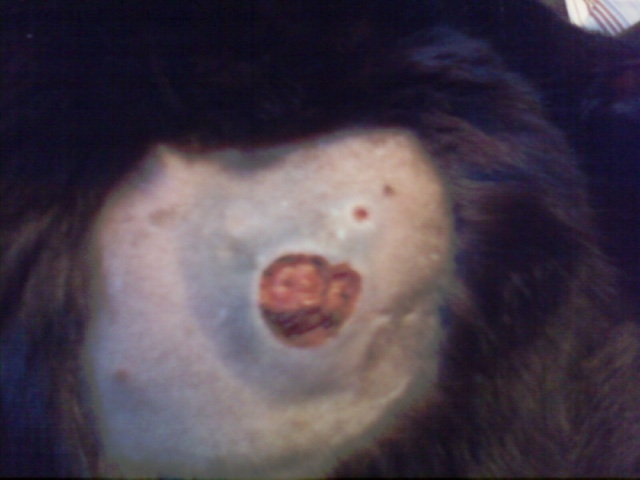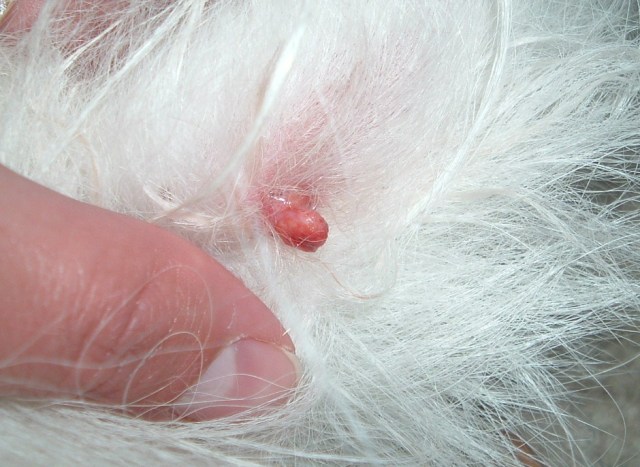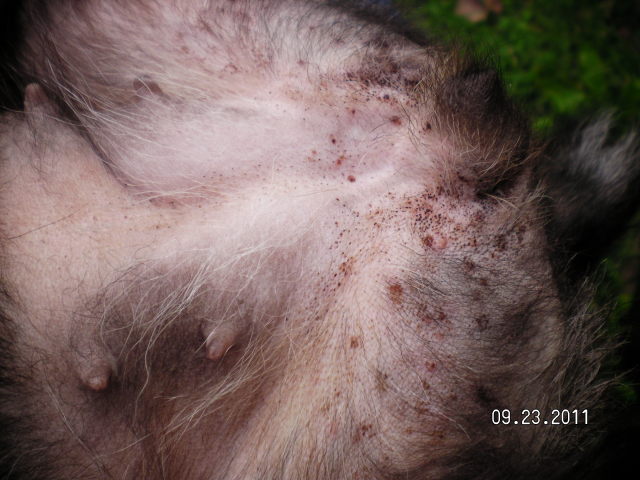QuestionMy dads older cat has had a rash for the past 6 years it started on her neck near were the collar sits and we took her to the vet and they gave her needles and that helped a little but just when you thought it would clear up it broke out again but eventually started spreading across most of her neck and then stomach and now is only on her stomach and back legs, sometimes her front legs to but now nothing is working on getting the infection to calm down, my dad insists on only going to one vet and not getting a second opinion the disease the vet has informed she has is Eosinophillic and that is it.For the past 3 years i have recently bought another cat into the house and im now being told it the newer cat to blame for the other cats infection not going away is this true? they don't get along at all they have to take in turns to be outside and now the older cat with the rash has started to hiss at us all the time sometimes she is good for a a few months but the starts hissing again could this be her frustrated at the rash or hating us for the other cat?she has been on steroids and cortisone cream and antibiotics what else is there that can cure this problem? is there a cure? could she just have this rash because the newer cat is making her nervous? at the moment the vet is blaming the other cat for being around is this right? or are they just telling dad what he wants to hear? he has been told to put the sick cat on different diet but he isn't going to until the other cat goes? please help i have spent hours trying to find out these answers
--------------------------------------------------------------------------------
Answer You are describing miliary dermatitis, which is an allergic skin disease. The eosinophils come out when there is an allergy, so that just confirms it. The steroid shots (usually DepoMedrol) will help decrease the allergic signs, like the rash, for 4-6 weeks, but the allergy is still present. A new drug called Atopica (cyclosporine) may be more helpful. Ask your vet about that.
Of course, the cat may need to be allergy tested to see what there might be in the environment causing this type of skin allergy. In my area, Alabama, it is usually fleas, so we use lots of flea control in these cats to control the exposure to the flea allergens. But some are also highly allergic to house dust mites and certain foods.
im sorry to give you a novel to read but its easier to copy and paste then try and remember everything i wrote, with the question i have previously ask and got an answer from another person that did help they didnt answer one question for me which is the infection the older cat has is it caused by the younger and newer cat in regards to stress and being nervous? if removing the newer cat will it resolve the problem or does it have nothing to do with the other cat at all?
AnswerOkay, aside from this being confusing, you are asking two different people the same question.
The answer the first person gave you was correct. Fleas are a big cause of this problem.
Now eosinophilic granulomas or rodent ulcers and miliary dermatitis are two different things entirely. They can look alike but the causes and problems associated with them are usually different.
The new cat is stressing out the older cat. So yes, in that way, since stress can make miliary eczema or dermatitis worse, the cat could be causing the problem. However, the new cat didn't START the problem.
The problem started from a flea allergy or an untreated food allergy or some kind of inhalant allergy. Changing the food to a hypo-allergenic diet such as Hill's Z/D would help a lot.
Just remember that while the newer cat didn't start this, removing her will not necessarily make it stop either. That has to be dealt with by changing the food, using newer drugs like the other person said and by keeping the house, the cats and the yard flea free.
I hope that this helps somewhat.

 Blue Skin Around Abscess
Question
Kittys Wound
A few weeks ago we noticed
Blue Skin Around Abscess
Question
Kittys Wound
A few weeks ago we noticed
 American Eskimo skin growth
Question
Buddy
We have a 9-11 Year old American Eskimo.
American Eskimo skin growth
Question
Buddy
We have a 9-11 Year old American Eskimo.
 dog has spots
Question
spot on back
my dog is a puggle pom mix
dog has spots
Question
spot on back
my dog is a puggle pom mix
 Bloody Hair Ball
Question
My Little Girl
My indoor cat vomited up a very
Bloody Hair Ball
Question
My Little Girl
My indoor cat vomited up a very
 Digestive problems and Dental care
QuestionQUESTION: Hi,
I have a 1 year pekingese who i b
Digestive problems and Dental care
QuestionQUESTION: Hi,
I have a 1 year pekingese who i b